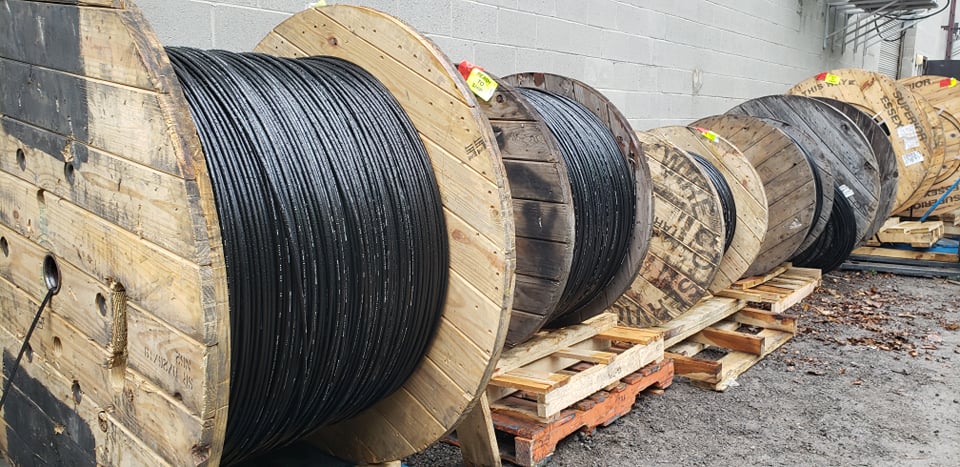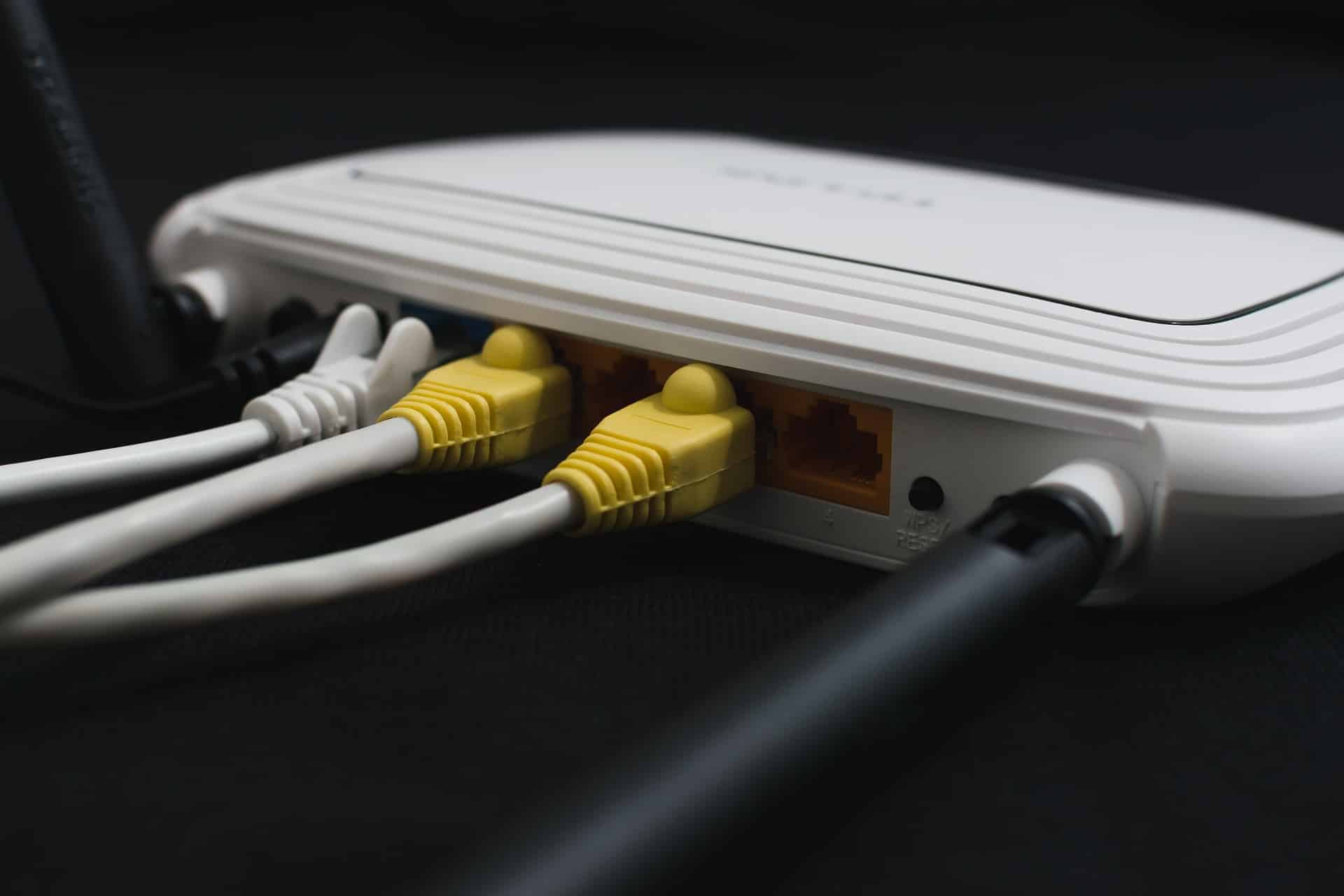What’s the Difference Between Cable Internet, DSL and Fibre?
Cable Internet
Cable internet is a high-speed access technology that uses a cable modem with a coaxial cable which provides a link to your Internet Service Provider. It’s typically provided by the same companies which provide cable television to their customers. Cable internet is widely available, with a variety of speeds to choose from. The Internet Service Provider will supply the customer with a modem, more specifically, usually a modem/Wi-Fi router combo. This kind of modem can also be referred to as a gateway. Once you have the modem in your house, you’ll take a coaxial cable that’s routed into your home, and attach it to the back of the device.
Cable can have its benefits, but one of the downsides to a cable internet connection is that you and all of your neighbours will have to share bandwidth, which means during peak hours of using the internet, you may experience slower than normal speeds since everyone in your area is using the bandwidth.
DSL Internet
Next, we have DSL internet, which stands for Digital Subscriber Line. A DSL connection can carry both voice and internet data over telephone lines. DSL modems use telephone lines to carry its data. Keep in mind that DSL is not the same as a dial-up connection, which also uses phone lines. A dial-up connection has very slow speeds, whereas DSL has a variety of high-speed options. With a DSL you can use the internet and talk on the phone at the same time, whereas with a dial-up connection, you wouldn’t be able to.
A DSL connection is not as fast as a cable internet connection, however, it is a cheaper option. You also don’t have to share bandwidth with your neighbours like you do with a cable connection. Anyone with DSL internet has their own dedicated connection, and not a shared line. Since DSL uses telephone lines, this internet connection is widely available as you can find phone lines pretty much anywhere.
Depending on where you’re located, DSL speeds can vary. The Internet Service Provider will provide you with a modem/Wi-Fi router combo, but instead of using a coaxial cable, you would connect a phone line to the modem.
Did you know there are three types of DSL? Here’s some information about each:
-
- First, there is ADSL (Asymmetric Digital Subscriber Line), where the download speed is much faster than the upload speed. Since households tend to download more than they upload, you’ll find this is the most common found within a home. It’s also the cheapest form of DSL.
- Second, there is SDSL (Symmetric Digital Subscriber Line). You will most commonly find this type of DSL connection with businesses, since the download and upload speeds are identical.
- Third, there’s VDSL (Very High Bit Rate Digital Subscriber Line), which is a faster version of DSL. Because this connection uses a copper wire, it’s only good for short distances. Did you know that VDSL is approximately 3 times faster than ADSL?
What are some other differences between a WAP and a Wi-Fi router?
A Wi-Fi router:
-
- Can connect to wireless and wired devices
- Has a built-in switch
- Will have a firewall
- Has a built-in DHCP service
- Will have a WAN (internet) port
Wireless access points:
-
-
- Can only connect to wireless devices
- Don’t have a firewall
- Don’t have a DHCP service
- Don’t have a WAN (internet) port
-
Fibre Internet
Lastly, there’s fibre internet. A fibre internet connection offers the fastest speeds available in today’s world – you can get upload and download speeds of up to 1 GB. But why is a fibre connection so fast? Well, that’s because it uses light to send data through the fibre optic cable, compared to DSL and cable that uses electricity through a copper wire. Signals in a copper cable can be affected by electromagnetic interference as it travels, potentially weakening the signal. On the other hand, fibre uses light to transmit its data over a thin glass cable, making it less vulnerable to interference. Fibre optic cable is the “backbone” of the internet. Fibre can travel longer distances compared to cable and DSL. Fibre is also more expensive than cable and DSL, and is still a pretty new technology. Since it’s still new, a fibre connection is not widely available yet.
Storm Internet offers cable, wireless, and DSL packages, and we’re currently working on expanding our fibre network. We’re working in the Clayton, Ontario area for fibre, expanding the network we started on a few years ago. Follow along with our blog to get weekly updates on what’s going on in Clayton!

MORE POSTS
Wi-Fi: How to Improve Your Connection
Wi-Fi: How to Improve Your Connection Click on the link below to watch our first online...
Mastering SEO for Your Business
Mastering SEO for Your Business The Key to Online SuccessClick on the link below to watch...
Staying Safe Online in 2023: Tips for Computer Security
Staying Safe Online in 2023Tips for Computer SecurityHello, dear readers! At Storm Internet, we...
CONTACT US
Head Office
1760 Courtwood Crescent
Ottawa, ON K2C 2B5
TOLL-FREE: 1-866-257-8676
Rediscover Customer Service.
HOURS OF OPERATIONS
Support Hours:
Monday-Friday 8am-8pm
Saturday-Sunday 10am-2pm
Sales Hours:
Monday-Friday 8am-4pm
Billing Hours:
Monday-Friday 9am-5pm
BUSINESS SERVICES
RESIDENTIAL SERVICES
TERMS OF SERVICE | PRIVACY POLICY | CORPORATE RESPONSIBILITY POLICY | ACCESSIBILITY | VOIP 911 TERMS
© Copyright 1996-2024 Storm Internet Services | All Rights Reserved.



